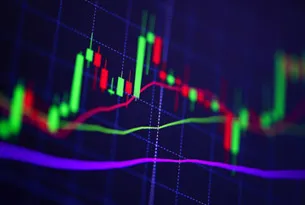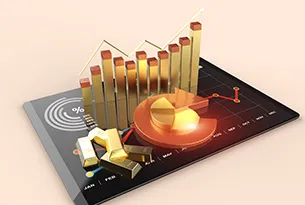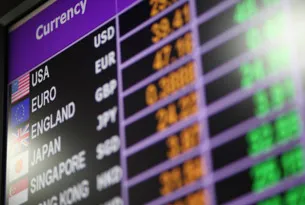Equities look more likely to correct with every passing day, while gold is set to spiral higher, writes Curtis Hesler of Professional Timing Service.
The market is looking less stable and more vulnerable, as the rally that was born in the chaos of the 2008 debacle continues. After two years of positive market action punctuated by a few months of corrective activity, one should be looking for a protracted decline.
I believe the reason we have not had one is due largely to the Fed’s intervention with bond purchases via QE1 and QE2. Regardless of the reason, equity prices have been on the rise for the last two years, and the rally is long in the tooth.
The stock market—after two years of what includes a good dose of artificially induced recovery—has yet to reach new highs.
The Dow Industrial Average is still about 13% below its 2007 high, and the S&P 500 is 15% below its pre-crash high. The Nasdaq has done a little better, sitting currently only about 2.5% below its 2007 high, but it is woefully below its all-time high of just over 5,000, set in March 2000.
There are currently some technical omens that do not look encouraging. MACD and RSI (the Moving Average Convergence Divergence and the Relative Strength Index, two technical measures of the market’s momentum) are showing negative divergence again, and volume characteristics are still not as robust as one would expect during a solid bull market.
My intent is not to obfuscate the situation with a lot of claptrap, but to point out that the market as measured by the popular averages is carrying a lot of risk here.
One thing you need to avoid in the investing business is a permanent loss of capital from being caught in a situation that you cannot recover from. Financial/paper assets look extremely open to loss, and holding non-commodity-advantaged assets could easily result in a permanent loss of capital.
Incidentally, this is the last of the best six months of the year for stocks. As the wise man said, “sell in May and go away.” Once the next crash unfolds, it will be too late to extricate one’s paper assets from damage.
NEXT: Gold Nears Escape Velocity
|pagebreak|Gold Nears Escape Velocity
I have concentrated entirely on tangible assets since our indicators told us to shift into them in 1999. It is evident that this strategy has borne fruit, with gold and crude oil up some 460% since the late 1990s.
The Dow/gold ratio, which could more aptly be named the Long-Term Gold Indicator, is still sitting at 8.41. You can easily monitor the ratio at StockCharts.com using the symbol $INDU:$GOLD. The ratio has fallen significantly since peaking at 43.7 in 1999, but there is still plenty of room remaining on the upside in the gold bull market.
The problem is, although we are not yet at the end of this bull run, we are not at the beginning either. That means that new investment positions do not carry the margin of safety we were able to gain earlier on. The price we pay is now more important, in order to offset the risk of buying into a more mature bull market.
The good news is that we have a new phase of the bull market ahead that I expect to see unfold over the next several months. The velocity phase will develop once gold is able to finally break through overhead resistance.
I have to admit that the breakout may be occurring already in a somewhat stealthy manner. Recently, gold managed to push modestly higher into the $1,440 range, but a sustained breakthrough on the upside has not occurred. [In the ten days since that was written, gold set a record at $1,478 an ounce and was approaching those levels again in Thursday’s trading—Editor.]
Sometimes when several highs form, as late last year, prices will break above them only to retreat back to the breakout level before moving higher. This may well be what is developing now in gold.
Subscribe to Professional Timing Service here…
Related Reading:


































